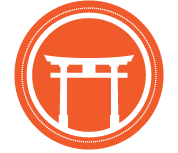Twenty Five Years of Aikido
Inryoku 6:1
By Josh Paul Sensei, AOSB Head Instructor
This year marks my 25th year of aikido. I’ve continued training and teaching through all sorts of life events like getting divorced and remarried, having a son, injuries, surgeries (including an emergency root canal), pandemics, natural catastrophes, new friendships, career changes, betrayals, and the advent of social media. Taken altogether, it begs one simple question: Why?
People often think that running a dojo and being called sensei is all about technique. If only that were true.
Why do I do it? After all, it’s not particularly lucrative, and I have a variety of aches and pains that no amount of yoga, rest, or NSAIDS will ease. I fall asleep when I stop moving. And I just spent 2 days applying Drylock to the dojo’s basement floor because of “hydrostatic pressure.” So, why? There are many answers, and I’ll write about some of them over the next few months, but I’ll start by sharing why I started.
My initial motivation was simple: I needed exercise. I thought that if I was learning to do something I might stick with it. The gym, weights, running, etc., bore me. I’m not alone in this. Market research and my own experience as a student and teacher suggests that about 75% of people who enter the dojo are motivated by fitness. That is, a significant majority of people are not expressly seeking self-defense or fighting skills or a spiritual awakening. They are seeking a workout that’s more interesting than the gym, and maybe more interactive than yoga.
And I wasn’t specifically looking for aikido. I could’ve ended up doing any martial art. I did a few searches on Yahoo! on my work computer (remember this 1999) about different types of martial arts, and discovered aikido. I was attracted to the absence of competition, and even more attracted to the dojo’s proximity to my apartment—it was just two blocks away! I guess it was meant to be.
Convenience is a major factor in a new student’s consistency and success. Choosing training over work, family, friends, and social events, and maintaining the motivation to do so, is hard for everybody. Combining those factors with a long and difficult commute to the dojo is not a recipe for success. Accessibility is important.
I don’t remember much about my first few classes other than Joseph Jarman Sensei’s smile. I remember feeling confused, sore, and nervous before going to the dojo, but not the techniques or training. However, I do remember it took me a long, long time to learn to roll. Like most new students, it also took time for me to build a regular practice, and to begin having the confidence to make the practice a priority. Once I did, and got into the flow of practice and the ki, I wanted to (and often did) practice everyday. I was constantly excited to go to the dojo, and eventually structured my entire work and social life around it.
Sometimes I’ll hear students say I can do something that they cannot because of some innate skill, or because I started young, or because I’m preternaturally talented. None of that is true. I just keep showing up.
My oldest aikido picture. Circa 2006.
Aikido has the potential to be exhilarating and tedious, rewarding and frustrating. It’s taken me to the far corners of NYC and parts of the country and world I would not have visited otherwise. It’s contributed to some of my problems and solved others. It’s been a stress release and a source of stress. But more about all that in future issues.




